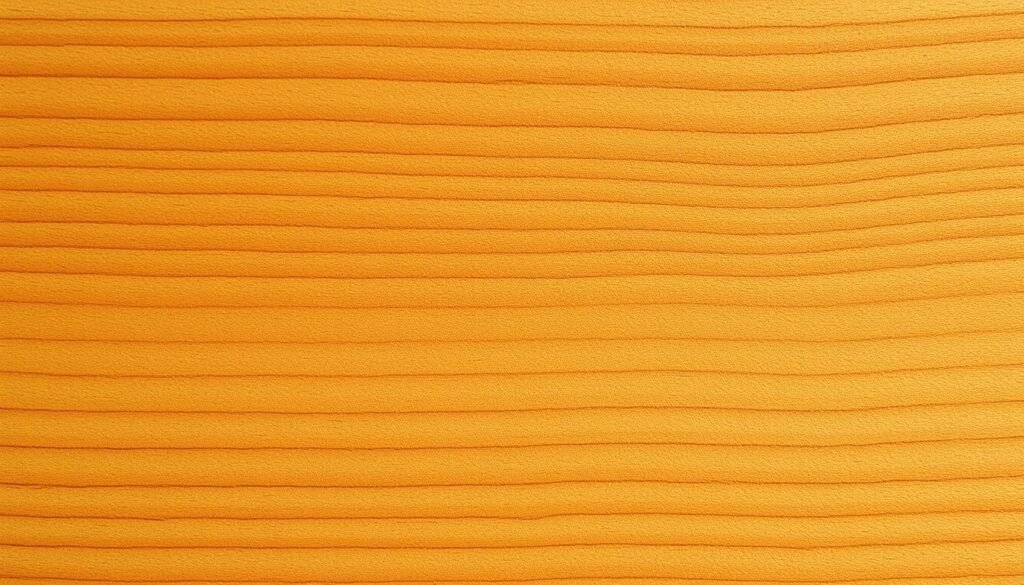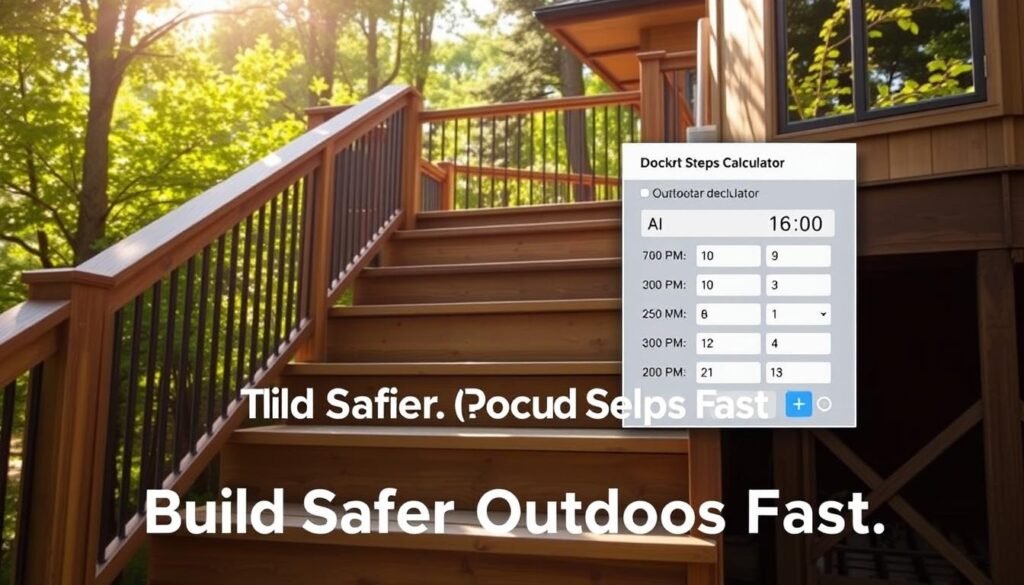Installing crown molding can be tough, mainly because of the need for precise cuts. Getting the angles right is key for a smooth fit, which is even more important at complex corners.
The Crown Molding Compound Bevel Angle Calculator makes this easier. It’s perfect for both DIY fans and pro contractors. This tool helps you get professional results without the hassle.
With this calculator, your crown molding projects will go smoothly. You’ll save time and cut down on waste.
Understanding Compound Angles in Crown Molding
Getting precise cuts in crown molding starts with understanding compound angles. These angles combine the miter and bevel angles. They are key for fitting crown molding right, mainly in corners.
The compound miter saw is a must-have for adjusting these angles. You also need an accurate angle measuring tool. The tools you use can greatly affect the cut’s precision.
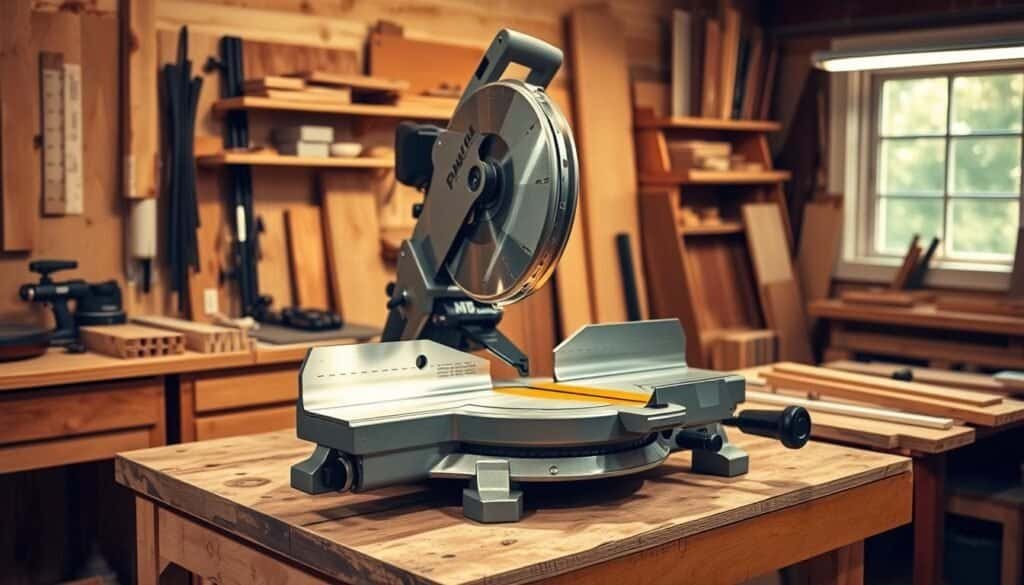
A crown molding cutting guide is very helpful for getting the right angles. It offers a reference for making exact cuts. It’s super useful for complex molding designs.
Things like the molding’s spring angle and the saw type matter for the angles. Knowing these and using the right tools helps get professional results. This is true for any crown molding project.
The Challenges of Cutting Crown Molding Correctly
Trim carpentry can be tough, but cutting crown molding is one of the biggest hurdles. Crown molding adds beauty to any room. Yet, its complex angles make it hard to cut right.
Getting precise cuts is key when working with crown molding. A small error can cause big problems, like uneven joints and wasted material. DIY projects often need crown molding cut at specific angles, which can be hard without the right tools and skills.
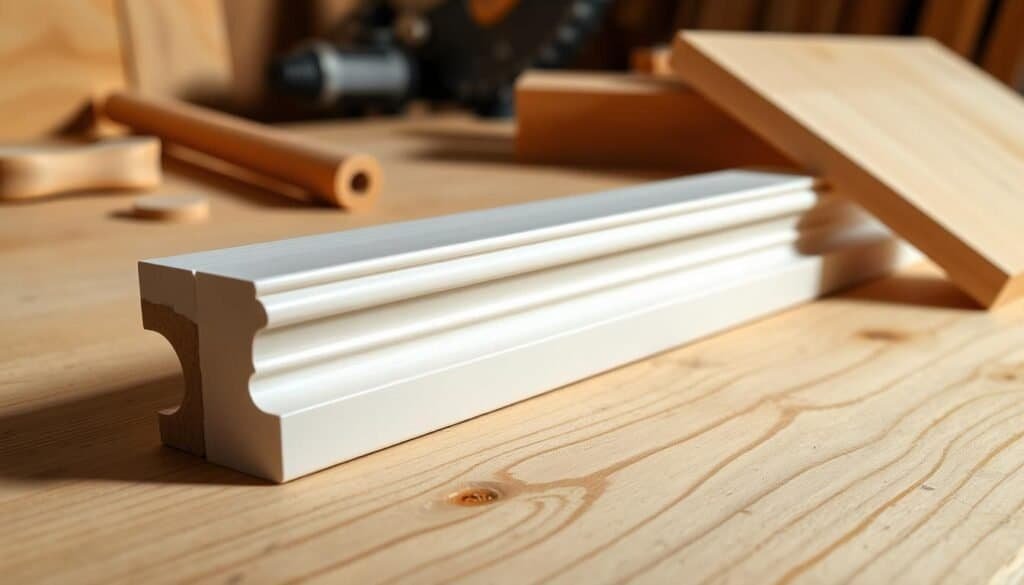
DIY crown molding projects require a lot of detail. The molding must fit perfectly against the wall and ceiling. For those new to trim carpentry, these cuts can seem overwhelming.
To beat these challenges, learning the right techniques and tools for cutting crown molding is vital. With practice and patience, DIY fans can get the hang of it. They can then achieve results that look like they were done by pros.
Compound Bevel Angle Helper for Crown Molding: Tools Overview
Crown molding installation needs precision. A compound bevel angle helper makes a big difference. The right tool simplifies cutting crown molding, leading to accurate and professional results.
Many tools help with calculating compound bevel angles for crown molding. You can find simple, manual tools like crown molding protractors or advanced digital calculators. A crown molding protractor is key for woodworkers to measure and replicate angles accurately. It’s a must-have for anyone working with wood crown molding.
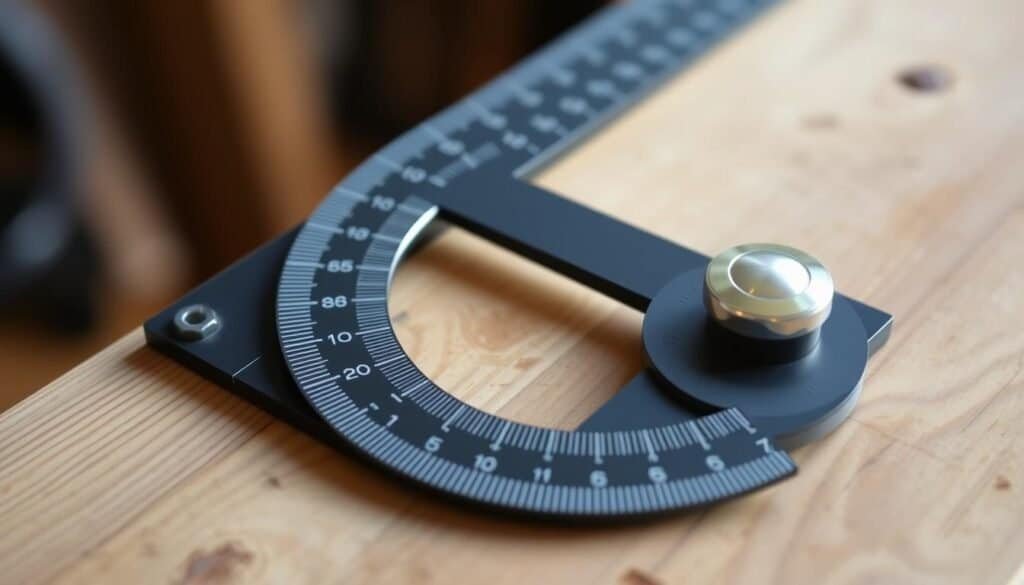
Choosing the right compound bevel angle helper is important. For simple jobs, a manual protractor or angle finder might be enough. But for complex projects or professionals, digital tools or software are better.
Free vs. Paid Options
Deciding between free and paid tools depends on your project’s complexity and budget. Free online calculators are great for simple projects or those on a tight budget. They offer basic calculations and are easy to use.
Paid tools and software have more features. They can save custom profiles, do complex calculations, and even generate cut lists. For frequent users or projects needing high precision, a paid tool is worth it.
In conclusion, the right compound bevel angle helper for crown molding greatly affects your work’s quality. Whether you choose a free online calculator or a paid tool, understanding your project’s needs is key. This ensures your work looks professional.
How to Use a Compound Bevel Angle Calculator
To get professional results with crown molding, knowing how to use a compound bevel angle calculator is key. This tool makes it easier to figure out the right angles for your crown molding. It helps you make precise cuts and ensures a perfect fit.
Start by putting the needed measurements into the calculator. You’ll need the spring angle of your crown molding and the wall angle of your site. The calculator will then give you the miter and bevel angles you need for your cuts.

After that, adjust these angles for your saw type. For a compound miter saw, set both angles as calculated. It’s important to know how to adjust for different saws to get accurate results.
Adjusting for Different Saw Types
Different saws might need different angle settings. For example, some saws might need the bevel angle set in the opposite direction. Always check your saw’s manual for how to set compound angles correctly.
By following these steps and using a compound bevel angle calculator, you can get precise cuts and professional results in your crown molding projects. This improves the look of your work, makes your projects more efficient, and reduces waste.
Essential Crown Molding Terminology You Should Know
Before starting a crown molding project, it’s good to know the basics. Crown molding uses special techniques and tools. Knowing the right terms is key to a great job.
Crown molding profiles describe the molding’s shape and design. You’ll find ogee, cove, and sprig profiles. Each one fits a different style.
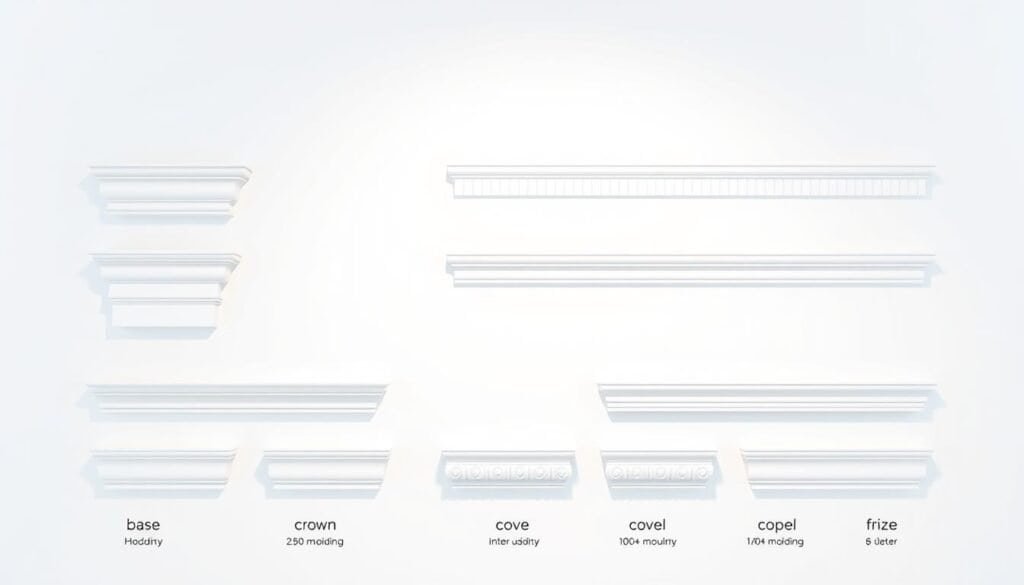
Knowing how to install is also important. Terms like “spring angle” and “compound angle” are vital. They help you cut and fit the molding right.
Being familiar with tools like miter saws, coping saws, and nail guns is necessary. Knowing these terms and tools helps you do a better job with trim molding ideas.
Popular Crown Molding Styles and Their Angle Requirements
The world of crown molding is full of different styles, each needing its own angle. These styles greatly affect a room’s look. It’s key for homeowners and builders to know about them.
The craftsman style crown molding is simple and clean. It usually needs a basic angle calculation, often a 38-52 degree spring angle. On the other hand, modern crown molding ideas are sleek and simple. They might need more exact angles for a smooth look.

Farmhouse crown molding ceilings are loved for their rustic beauty and detailed designs. These ceilings need complex angle calculations. The angles for farmhouse crown molding often mix 45-degree and 52-degree spring angles.
Getting the compound bevel angle right is key for a top-notch finish. Knowing the angle needs of each style helps ensure a perfect fit. This makes any space look better.
DIY Methods for Calculating Crown Molding Angles
Calculating crown molding angles is easy, even without special tools. You can get professional results with simple techniques and basic math.
One way is to use a combination square and a protractor. First, measure the spring angle of your molding with a combination square. This is the angle between the molding’s back and the wall. Then, use a protractor to find the angle between the molding and the ceiling or wall.
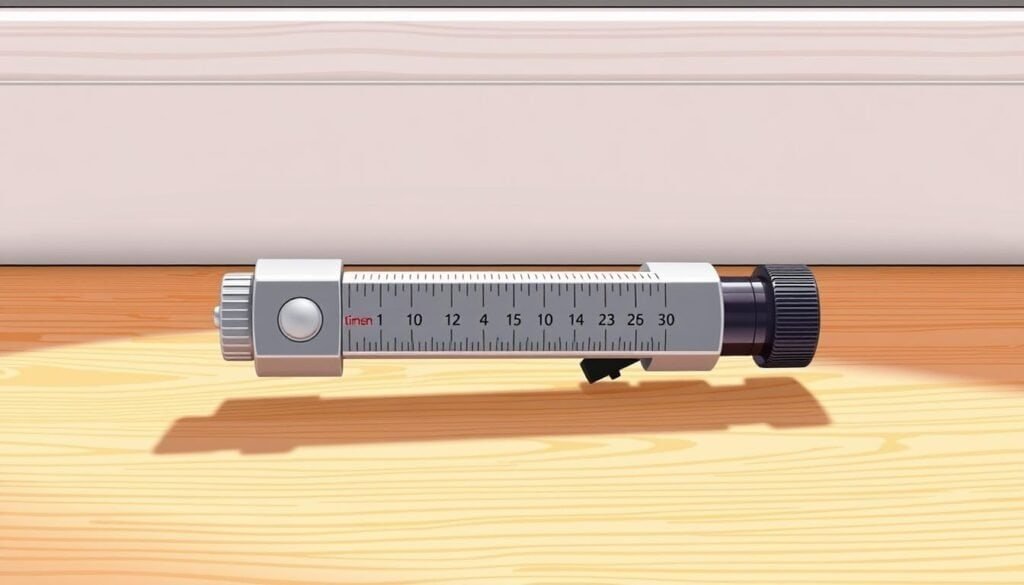
Another method uses trigonometry to find the compound angle. The compound angle is where the molding meets the corner. You need the spring angle and the wall angle for this. A calculator or trigonometry table can help figure it out.
For a visual approach, make a scale drawing of the room and molding. Measure the angles with a protractor on your drawing. This way, you can find the compound angles accurately.
There are also online tools and apps for calculating crown molding angles. These are great for complex trim work.
With these DIY methods, you can get precise angles for your crown molding. This ensures a professional finish for your trim work.
Top 5 Crown Molding Angle Calculators Reviewed
Crown molding projects need precision, and the right tools help a lot. Choosing the best crown molding angle calculator can be tough. We’ll look at the top 5, comparing their features, ease of use, and accuracy to guide you.
The Crown Molding Calculator by Calculator.net is a great start. It’s free and easy to use, helping with both miter and bevel angles. It’s perfect for both DIY fans and pros.
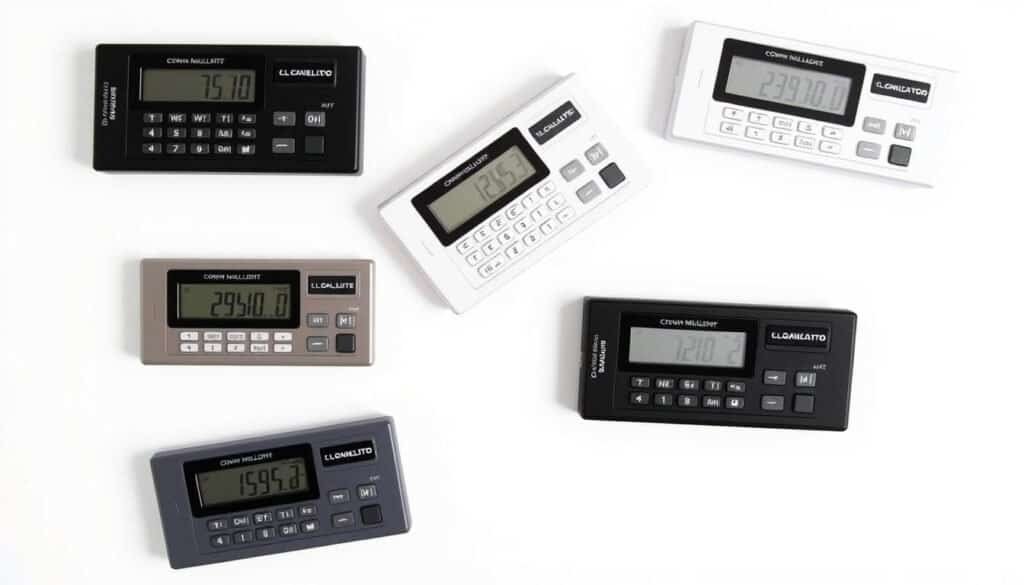
The Miter Angle Calculator by blocklayer.com is next. It’s great for complex angles and comes with detailed explanations. It’s ideal for those tackling tricky crown molding designs.
The Crown Molding Calculator Pro by sawyerspace.com is also highly praised. It has advanced features like calculating angles for different moldings. Its interface is user-friendly.
The Angle Calculator by mathopenref.com is versatile, not just for crown molding. It’s simple to use, making it a solid backup for tough projects.
Lastly, the Crown Molding Angle Calculator by calculator.academy is known for its thorough approach. It offers calculations for various crown molding scenarios and includes a detailed guide.
When picking a crown molding angle calculator, think about your project’s needs. Whether you’re a pro or a DIYer, these tools ensure your work looks great. They help you get the precision needed for stunning crown molding projects.
For more woodworking tips and to find other crown molding tools, check out more resources. They can improve your skills and project results.
Troubleshooting Common Crown Molding Angle Problems
Fixing crown molding angles is key for DIY home repairs. Even with good planning, problems can pop up during installation.
One big issue is wrong measurements, causing joints to not fit right. Always double-check your numbers before cutting. A compound bevel angle calculator can help you get it right.

Another problem is bad cuts, often due to dull or misaligned saw blades. Keep your tools sharp and in good shape. If a cut is off, sanding or a coping saw can fix it.
Complex molding designs can be tough to fit perfectly. Break the job into smaller parts and work on one piece at a time. This makes it easier.
Knowing how to fix common crown molding angle issues saves time and reduces waste. This ensures your DIY projects look professional.
Conclusion: Mastering Crown Molding Angles for Professional Results
Getting the right angles for crown molding is key to a pro look in your DIY projects. This guide helps you understand how to do it right. You’ll make your ceiling look amazing.
Learning crown molding angles takes time and effort. But with the right tools and methods, you can get great results. It doesn’t matter if you’re new or experienced. The secret is knowing how to use compound bevel angles.
Follow this guide and use the tools suggested. You’ll make crown molding that makes your home look amazing. So, practice and you’ll soon have beautiful crown molding.


